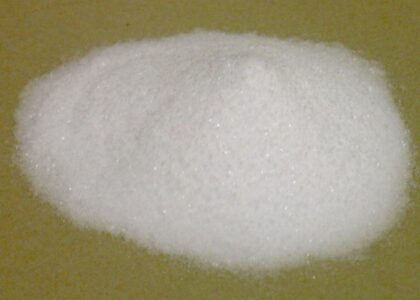The market for fish processing is expected to grow at a CAGR of 7.3% over the course of the forecast period, reaching an estimated revenue of US$ 406948.3782 million by 2032, up from US$ 202100 million in 2022. Previously, the fish processing market expanded at a rate of 5.7% CAGR from 2016 to 2021.
Fish processing is a practice involving fish and its products, which is performed between the times the fish are caught and continues until the final product is shipped to the customer. The final product delivered can be eaten right away. Fish processing encompasses the full range of aquatic organisms, regardless of the catchment (wild fishing or aquaculture).
One of the main concerns of this process is preventing the fish from rotting. Fish are perishable and therefore require preservation and proper handling, so processing fish is necessary because the final product is nutritious and has a long shelf life. Preservation is a key technology in fish processing (preventing fish spoilage and extending shelf life).
One of the main benefits of fish processing is that it helps the sustainable use of marine resources, thus increasing the demand for more processed fish in the market.
Request Sample of This Report @ https://www.futuremarketinsights.com/reports/sample/rep-gb-2397
It has been found that the freshness of fish (seafood) can be improved by ozone. Ozone treatment of processing equipment and fish can ruin fish by reducing bacterial attack. Therefore, the use of ozone increases the profitability of the fish processing industry. Fish processing includes primary and secondary stages. Primary processing includes washing, sorting, freezing and packaging of fish. Secondary processing involves the production of processed fish and seafood for meal components or ready-to-eat meals. Ozone treatment of processing equipment and fish can ruin fish by reducing bacterial attack.
Therefore, the use of ozone increases the profitability of the fish processing industry. Fish processing includes primary and secondary stages. Primary processing includes washing, sorting, freezing and packaging of fish. Secondary processing involves the production of processed fish and seafood for meal components or ready-to-eat meals.
Fish Processing: Market Segmentation
The global fish processing market is segmented on the basis of source, application, processing type, and equipment. The sources from which fish are obtained are freshwater, marine and inland. The marine segment holds the largest market share due to modern technology and fishing methods. Applications are segmented into food, feed, biomedical and other (fertilizer, cosmetic and industrial).
Food occupies the largest market share in the fish processing market due to changes in human consumption habits, followed by feed and biopharmaceuticals. The types of processed fish are frozen, preserved, dried and other (smoked and surimi). Freezing is the most common type of fish processing practiced. Equipment used for fish processing is hair removal and gutting, dehulling, scaling, filleting, descaling and rinsing and others.
Get a Discount on Customized Report@ https://www.futuremarketinsights.com/customization-available/rep-gb-2397
Fish Processing: Regional Perspectives
Geographically, the fish processing industry can be divided into major regions including North America, Latin America, Europe, Asia Pacific and Middle East & Africa. Processed fish is consumed most in North America, followed by Asia Pacific and Europe. The United States ranks first in consumption of bluefin tuna and Atlantic salmon. Asia Pacific has huge fish processing facilities, with China leading the market. Other Asian countries, such as Japan, Malaysia and South Korea, rely mainly on fish processing.
Fish Processing Market: Growth Drivers
The main drivers identified as driving the fish processing market are the continuing increase in seafood demand, changing consumer eating habits and consumer demand for differentiated and high-value seafood products. The fish processing industry is also accessible to seafood producers, allowing them to control the final product, quality and hygiene. The increase in fish feed is also a major driver identified driving the growth of the global fish processing market. Development and distribution channels with improved packaging, processing and storage of fish are also identified factors driving market growth.
Fish Processing Market: Players
Fish processing companies have grown in value as processing facilities empower fish processors to oversee the quality and hygiene of their final products. Key players identified in the global fish processing market include Pelagia AS, Leroy, Pescanova USA, Maruha Nichiro Corporation, Thai Union Group Public Company Limited, Royal Greenland A/S, NISSUI, High Liner Foods, Charoen Pokphand Foods PCL, Channel. Fish Processing Company, Inc. and Marine Harvest ASA.
Use promo code ->> FMITODAY to get flat 30% discount@ https://www.futuremarketinsights.com/checkout/2397
Frequently Asked Questions
What is the Growth Outlook for the Fish Processing Market?
Which Region is anticipated to embrace the Maximum Share in the Global Fish Processing Market?
What is the Future of the Fish Processing Market?
About FMI
Future Market Insights (ESOMAR certified market research organization and a member of Greater New York Chamber of Commerce) provides in-depth insights into governing factors elevating the demand in the market. It discloses opportunities that will favor the market growth in various segments on the basis of Source, Application, Sales Channel and End Use over the next 10-years.
Contact Us:
Unit No: 1602-006
Jumeirah Bay 2
Plot No: JLT-PH2-X2A
Jumeirah Lakes Towers, Dubai
United Arab Emirates
For Sales Enquiries: sales@futuremarketinsights.com
Browse Other Reports: https://www.futuremarketinsights.com/reports



